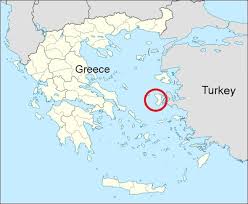
Chios (Greek: Χίος) is the fifth largest of the Greek islands in the Aegean Sea separated from Turkey by the Chios Strait. It is also referred to as “the Mastic Island” as it is the sole global producer of the prized mastic or “tears of Chios”.
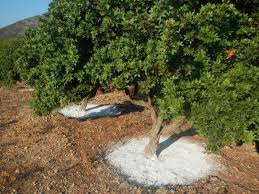 The mastic tree (Greek: μαστίχα), derived from the Latin word “Masticure” (to chew), (Greek: μαστιχάω, to gnash teeth) belongs to the Pistacia lentiscus group, which is an evergreen shrub or small tree cultivated for its aromatic resin. It has deep-green leaves with red fruit that turn black when ripe. Although it is native to the whole of the Mediterranean area, only in the southern part of Chios is this invaluable resin produced. In the other countries, the trees are planted for decoration purposes only. They can be found as far away as Mexico.
The mastic tree (Greek: μαστίχα), derived from the Latin word “Masticure” (to chew), (Greek: μαστιχάω, to gnash teeth) belongs to the Pistacia lentiscus group, which is an evergreen shrub or small tree cultivated for its aromatic resin. It has deep-green leaves with red fruit that turn black when ripe. Although it is native to the whole of the Mediterranean area, only in the southern part of Chios is this invaluable resin produced. In the other countries, the trees are planted for decoration purposes only. They can be found as far away as Mexico.
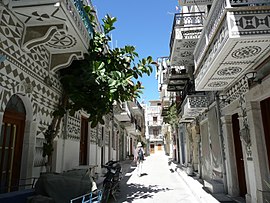
There are about twenty-four villages, called the ‘mastichochoria’ (Greek: Μαστιχοχώρια) that make up the area in which the mastic trees are grown. They are medieval villages as they were basically built between 14th and 16th century although there are many churches and monasteries that go back to the Byzantine period. The largest of the mastic villages is Pyrgi (Greek: Πυργί), known as the ‘painted village’ as most of the houses are decorated with black and white motifs in different shapes. The mastic production is controlled by a cooperative which was founded in 1938. There is also a Mastic Museum in Pyrgi, which was opened in 2016 with a permanent exhibition on mastic production, its history, cultivation techniques and its uses today.
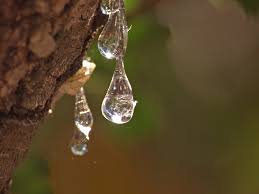 The resin is collected by bleeding the trees from small cuts made in the bark of the main branches and trunk of the trees with special knives. The resin drips onto the specially prepared ground below and hardens into drops of brittle translucent resin. That is how it has been given the name ‘tears’. The harvesting is done in the summer between June and September. After the mastic is collected, it is washed manually and set aside to dry away from the sun, as it will start to melt again.
The resin is collected by bleeding the trees from small cuts made in the bark of the main branches and trunk of the trees with special knives. The resin drips onto the specially prepared ground below and hardens into drops of brittle translucent resin. That is how it has been given the name ‘tears’. The harvesting is done in the summer between June and September. After the mastic is collected, it is washed manually and set aside to dry away from the sun, as it will start to melt again.

Mastic gum is an expensive spice. It has been used as a chewing gum, for culinary purposes as well as for medicinal purposes for over 2,400 years in Greece and not only. Pedanius Dioscorides, an ancient Greek physician, pharmacologist, botanist and author wrote about the medicinal properties of mastic in his treatise “De Materia Medica (Greek: Περί ύλης ιατρικής = On Medical Material). Mastic oil has antibacterial and antifungal properties. As a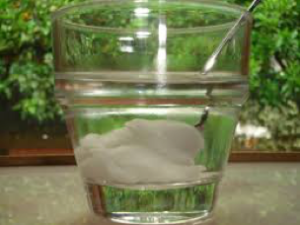 spice, it is used in Greece to flavour liqueurs, chewing gum, cakes and pastries, spoon sweets, loukoumia, festival bread such as tsoureki and the traditional New Year’s vasilopita as well as ipovriheio (Greek: υποβρύχιο = ‘submarine’ as the sweet is spooned into a glass of cold water), which is very refreshing in the summer.
spice, it is used in Greece to flavour liqueurs, chewing gum, cakes and pastries, spoon sweets, loukoumia, festival bread such as tsoureki and the traditional New Year’s vasilopita as well as ipovriheio (Greek: υποβρύχιο = ‘submarine’ as the sweet is spooned into a glass of cold water), which is very refreshing in the summer.
Mastic is even used in cosmetics, perfumes, toothpaste as well as lotion for hair and skin. It is amazing what a ‘tear’ of mastic can do.
It is interesting to note, that when the massacre of Chios was carried out in 1822 by the Ottomans in order to stop the uprising, the people of the Mastichochoria were spared so that they could continue to produce the mastic in order to provide the Sultan and his harem with it.
On Saturday 18 August 2012 a wild fire broke out in the area. It was difficult to bring it under control and it therefore burned for days destroying thousands of hectares of farmland as well as thousands of Mastic trees. It almost destroyed the mastic production of the island.
In 2019, two local people with a love of the land left their original jobs in order to set up
“Adopt a Chios Mastic Tree”. Through the project www.adoptchiostrees.gr:
- You can adopt a Chios Mastiha Tree and receive, together with the Adoption Certificate, 50gr of natural Chios Mastiha as well as a photograph of your tree with the characteristic sign-board on it, specially designed for you.
- You can visit your tree and live a powerful experience of the cycle of the Mastiha cultivation.
Why adopt Chios Mastic trees?
- To create roots connecting you to the unique Chios Mastiha Tree. A tree which offers the gift of the precious healing “tear” uniquely to Southern Chios. The Chios Mastiha is a national P.D.O. product.
- To strengthen the cultivation of Mastiha. A traditional cultivation, which has been included by UNESCO in the list of the Intangible Cultural Heritage of Humanity.
If anyone is interested in this project, check out the website. Such experiences are rare.